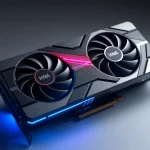Xiaomi MI 17 Pro Max y Pro decepcionan con rendimiento mediocre

In the competitive landscape of smartphones, Xiaomi's latest offerings, the MI 17 Pro and 17 Pro Max, were anticipated to make a significant impact with the much-lauded Snapdragon 8 Elite Gen 5 chipset. However, early reviews and benchmarks suggest otherwise. Users and reviewers alike are left questioning whether the performance truly lives up to the hype. In this article, we will delve into the specifications, performance metrics, and implications for Xiaomi as it faces off against industry giants like Apple.
Xiaomi’s Performance: A Disappointment Against Rivals
The initial excitement surrounding the Xiaomi MI 17 Pro series has been met with a sobering reality. Despite being among the first to feature the Snapdragon 8 Elite Gen 5 processor, the actual performance metrics reveal a lackluster outcome. Benchmarks indicate that these devices fail to fully exploit the capabilities of Qualcomm's latest SoC, leading to a performance that trails behind even last year's flagship models from competitors.
For instance, benchmark results from AnTuTu show the Xiaomi 17 scoring 981,459 points in CPU performance, which is only slightly higher—by a mere 3%—than the Vivo X200 Ultra, which uses the previous generation Snapdragon 8 Elite. Notably, both the MI 17 Pro and Pro Max scored lower than the standard MI 17, highlighting a troubling trend in performance inconsistency.
Benchmark Comparisons: Xiaomi vs. Competitors
When we analyze performance through other benchmarking tools like Geekbench 6, the results further illustrate the challenges Xiaomi faces:
- Single-Core Scores: Between 3,328 and 3,407
- Multi-Core Scores: Between 10,120 and 10,416
- Comparison with the Oppo Find X8 Ultra: Scores of 3,145 (Single-Core) and 9,722 (Multi-Core)
- Qualcomm's reference device reached scores of 3,832 and 12,459
Furthermore, the MI 17 Pro Max managed to achieve 3,399,680 points in AnTuTu, with 899,928 in CPU and 1,230,507 in GPU scores. This performance is notably 13% to 20% lower than expected based on Qualcomm's benchmarks, raising questions about Xiaomi's optimization strategies.
Thermal Management and Performance Sustainability
Another critical area of concern arises when observing sustained performance under stress conditions. In the 3DMark Wild Life Extreme Stress Test, the Xiaomi 17 Pro Max recorded:
- Initial Loop Score: 6,512 points
- Lowest Score: 4,230 points
- Stability Rate: 65%
- Frame Rate Drop: From 49 FPS to 18 FPS
- Temperature Increase: From 32 ºC to 51 ºC
- Battery Drain: From 43% to 33% during the test
These figures suggest significant throttling and inadequate thermal management, despite the large chassis and vapor chamber design intended to enhance cooling. Whether the issue lies with Qualcomm's chip design or Xiaomi's execution remains a key question, but the observed data paints a negative picture.
Market Implications: Xiaomi vs. Apple and Google
The implications of these performance setbacks extend beyond mere specifications. Xiaomi’s claim to be the first with the Snapdragon 8 Elite Gen 5 now seems hollow in light of the disappointing results. The current landscape presents a golden opportunity for competitors like Apple and Google to capitalize on Xiaomi's missteps.
Historically, Xiaomi's approach with MIUI/HyperOS has been to prioritize thermal control, which may have hindered the full potential of the Snapdragon processor. While there are still positives—such as fast memory, substantial battery capacity, and unique secondary display features—these advantages cannot compensate for the underwhelming raw performance.
What Lies Ahead for Xiaomi? The Road to Recovery
As the smartphone market continues to evolve, Xiaomi faces mounting pressure to innovate and improve. The expectation is now on future models from brands like Honor, Oppo, and RedMagic, which have shown a willingness to push performance boundaries further than Xiaomi. The upcoming Samsung Galaxy S26 Ultra will also likely set new benchmarks that Xiaomi must meet or exceed.
In summary, the MI 17 Pro and Pro Max present a cautionary tale for Xiaomi, emphasizing the importance of not just being first to market but also delivering on performance expectations. Customers looking for cutting-edge technology may need to consider other options until Xiaomi can demonstrate significant improvements in its next generation of devices.
For those interested in a deeper understanding of the Xiaomi 17 Pro Max, check out this insightful review:




Leave a Reply